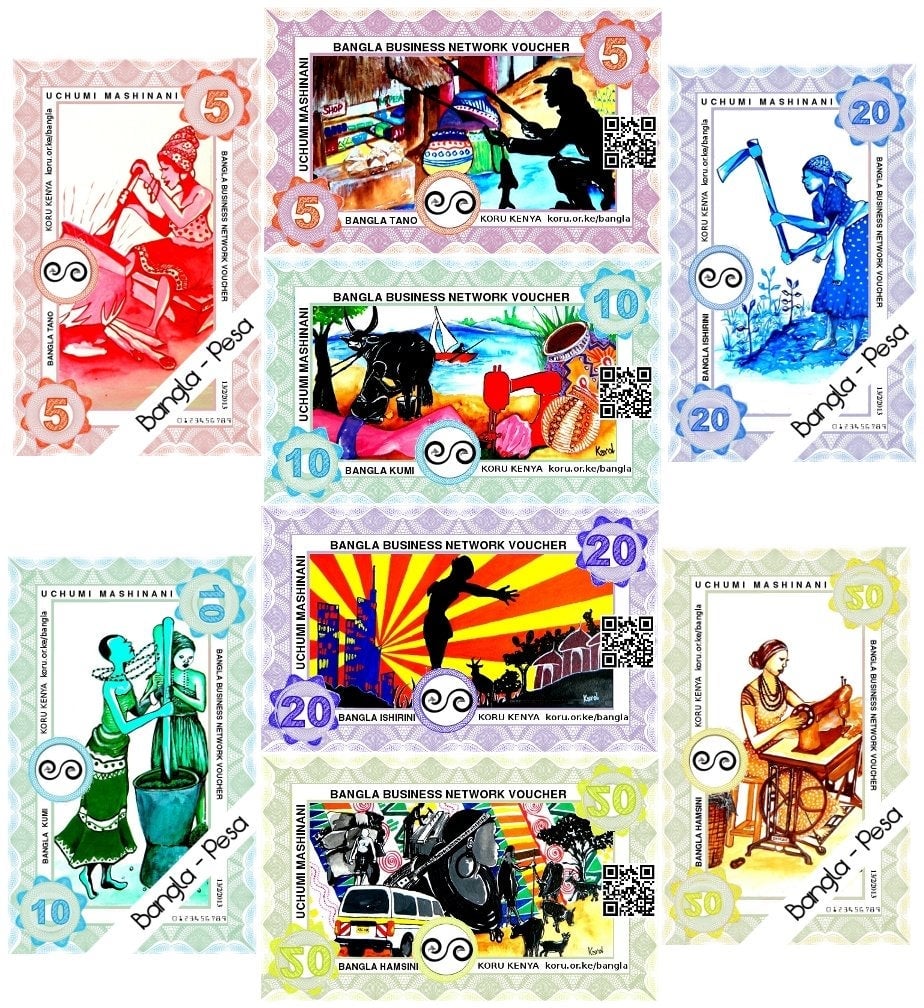Introducing the Bangla-Pesa, Kenya’s beautiful new complementary currency
The Kenyan Bangla-Pesa, shown above, could enliven the interior of any wallet or purse. But most Kenyans won’t have the pleasure of handling the stunning new bills, because they are only accepted in an impoverished settlement called Bangladesh near the city of Mombasa.

The Kenyan Bangla-Pesa, shown above, could enliven the interior of any wallet or purse. But most Kenyans won’t have the pleasure of handling the stunning new bills, because they are only accepted in an impoverished settlement called Bangladesh near the city of Mombasa.
The currency, which was introduced less than two weeks ago by Koru, a Mombasa-based non-profit organization, is not designed to be an alternative to the Kenyan shilling, but rather to complement it by boosting economic activity in Bangladesh, where shillings are scarce. Bangla-Pesa are scrip born out of mutual consent: some 200 businesses have agreed to accept the currency, and in return, each has been awarded a credit of 400 Bangla-Pesa.
That credit works like a zero-interest loan. Every new business that joins the Bangla-Pesa network must be supported by four guarantors who are already members. If the new business spends its 400 Bangla-Pesa, then fails to earn as much back, its guarantors must make up the difference, or all five businesses will be ejected from the network and forced to pay back the debt directly in goods and services.
There are many other examples of so-called complementary currencies (here’s a database of well over 100). An experimental local currency was issued in the Austrian town of Wörgl during the Great Depression, and because it was designed to lose value over time, it strongly encouraged spending and actually reduced unemployment. Frequent flyer miles can be thought of as complementary currencies; you can spend them in specific circumstances, and they don’t compete with national currencies.
The Bangla-Pesa has a direct predecessor in another Kenyan local currency, the Eco-Pesa. Eco-Pesa began circulating in August 2010 in Kongowea, which like Bangladesh, is made up of multiple villages crammed together tightly. Such informal settlements are among the most densely populated areas in Kenya. Yet unfortunately, they often lack the infrastructure to dispose of trash and sewage. The Eco-Pesa was set up to deal with that problem (pdf).
Here’s how: After the currency was introduced to Kongowea, the settlement held a large trash disposal event, in which local youths were given five Eco-Pesa for each trash bag they filled (the trash was ultimately sent by truck or hand-cart to the nearest landfill). They spent this cash at local businesses, which could either use it to buy goods or services from other local sellers or exchange it for shillings. After three months with the Eco-Pesa, the monthly income of businesses in Kongowea had risen by 22%, and the settlement had rid itself of 20 tonnes of trash.
Unlike the Eco-Pesa, the Bangla-Pesa wasn’t introduced to solve the waste management woes of Bangladesh, nor can the currency be exchanged for shillings. The goal is to create an interest-free system of microfinance that doesn’t rely on a bank or financier, but allows new businesses to get started by buying local goods and services on credit. Will it work? Hard to say, but Koru plans to release a progress report at the end of the year.